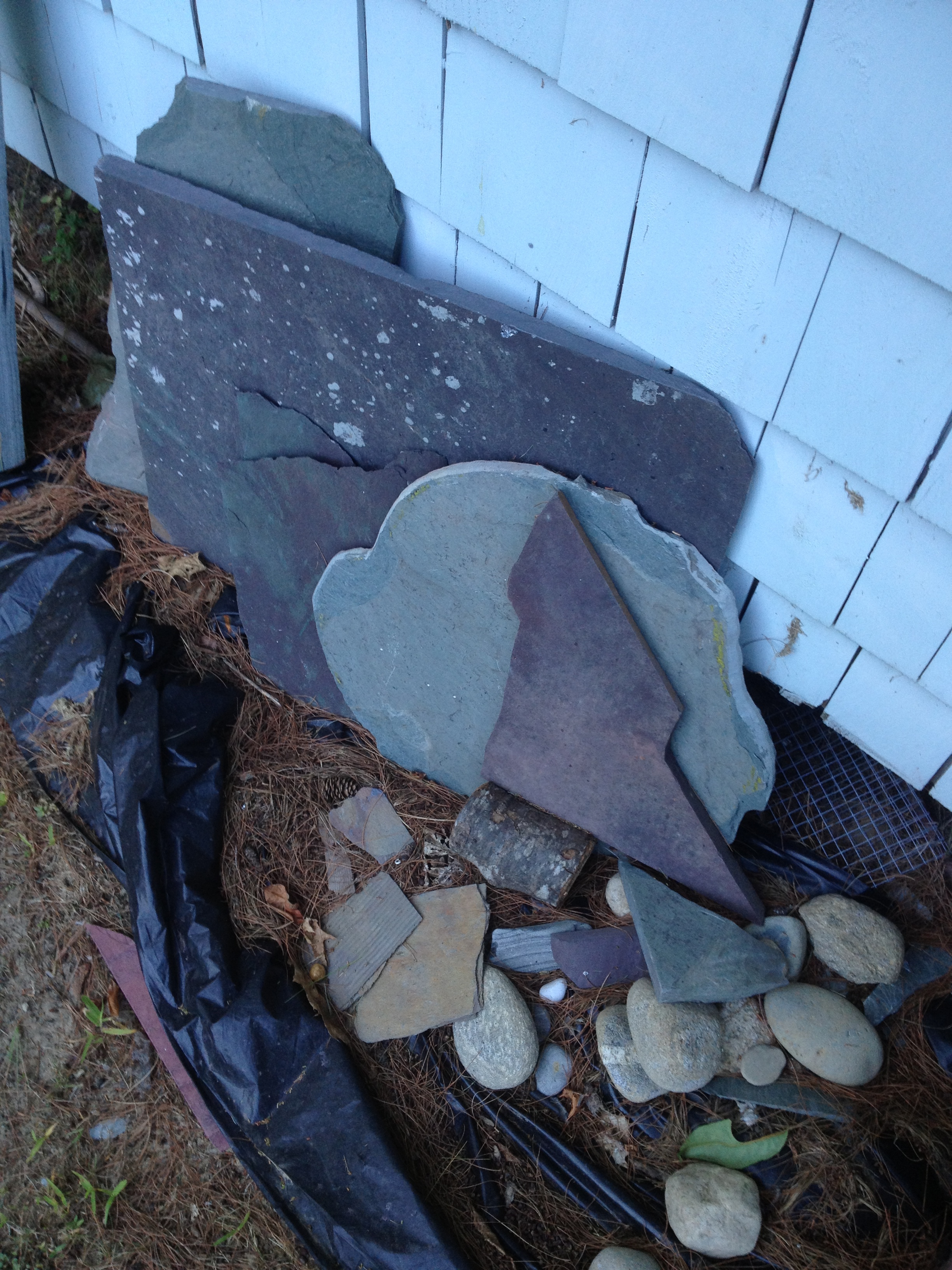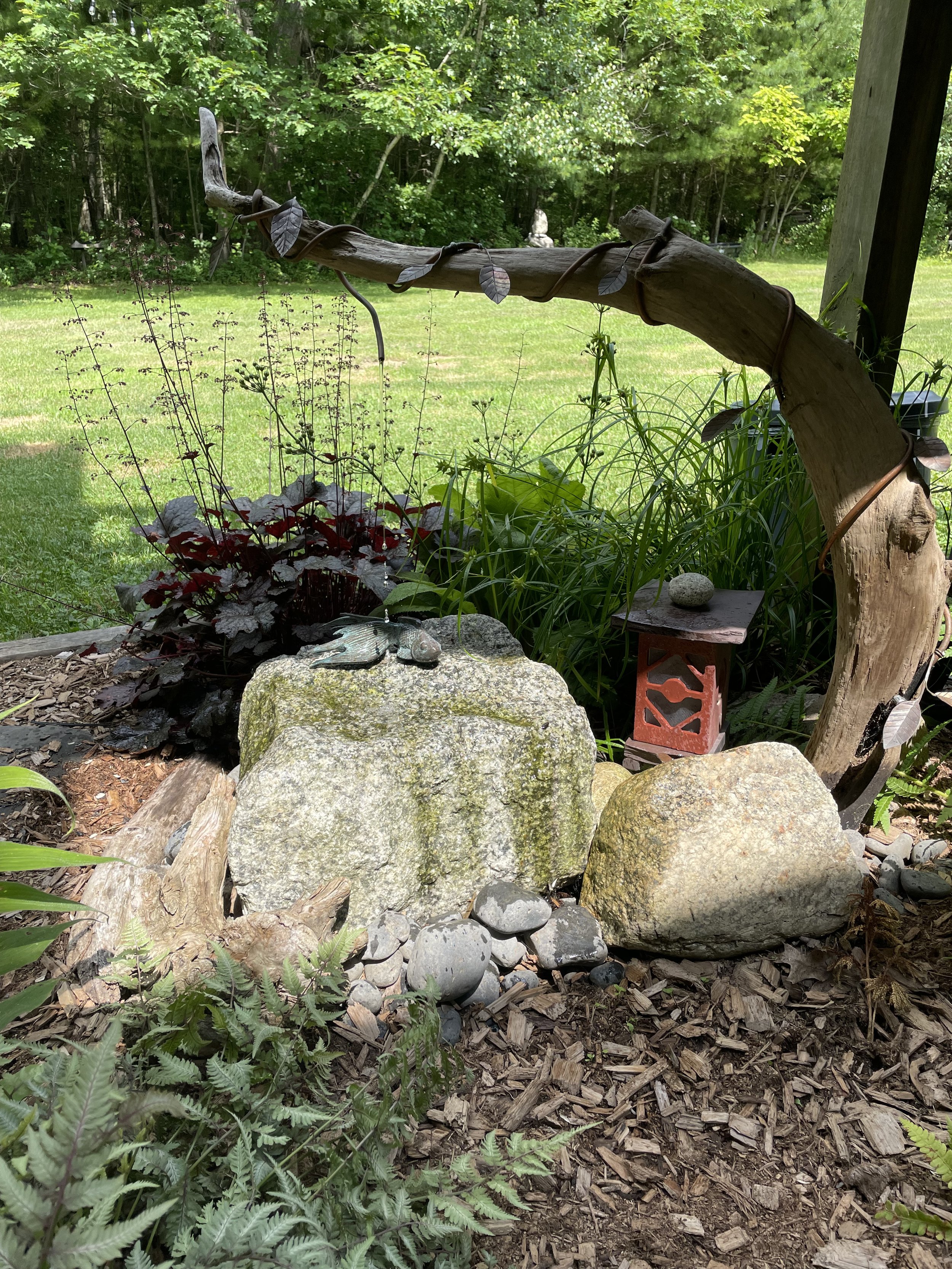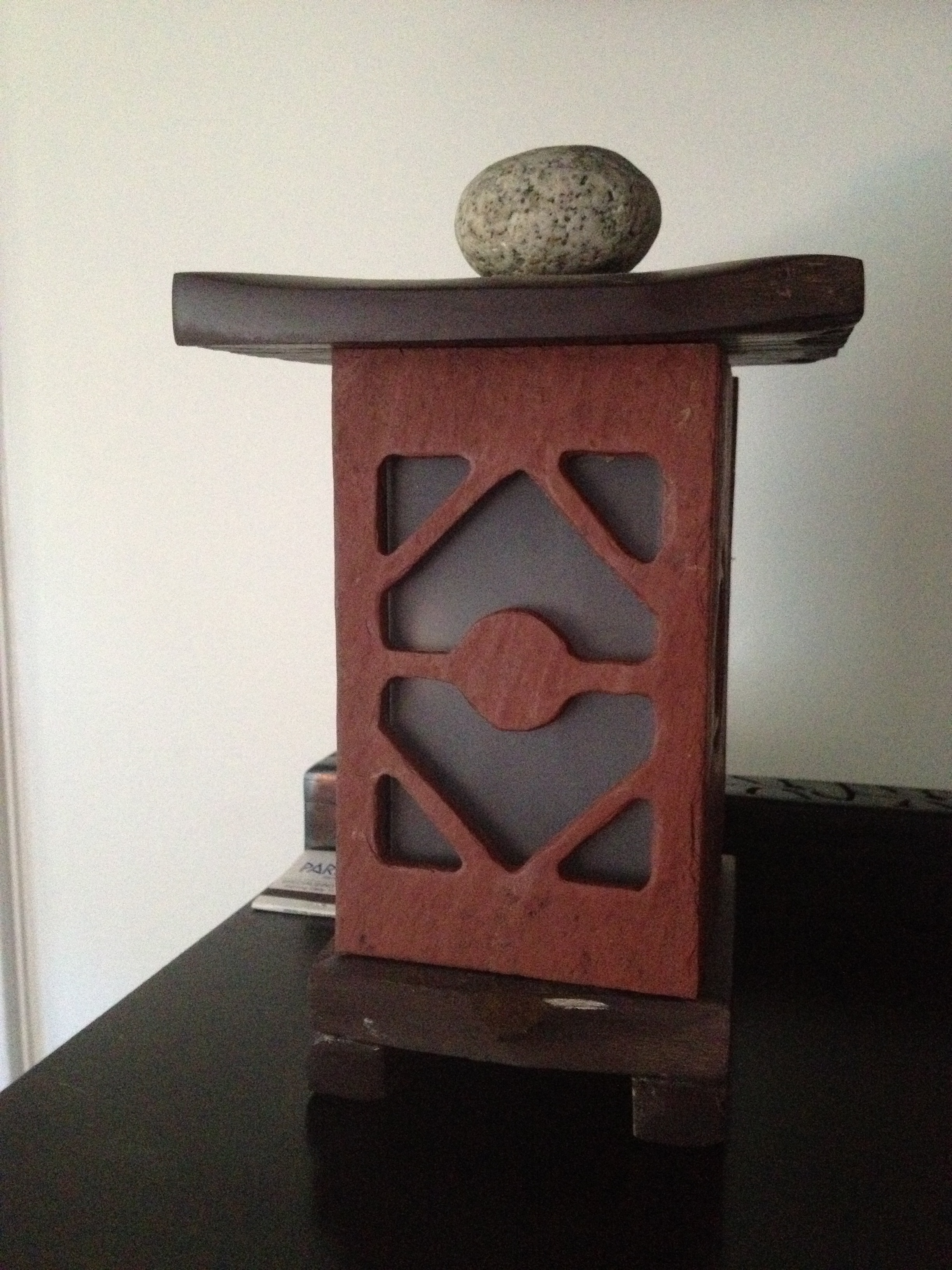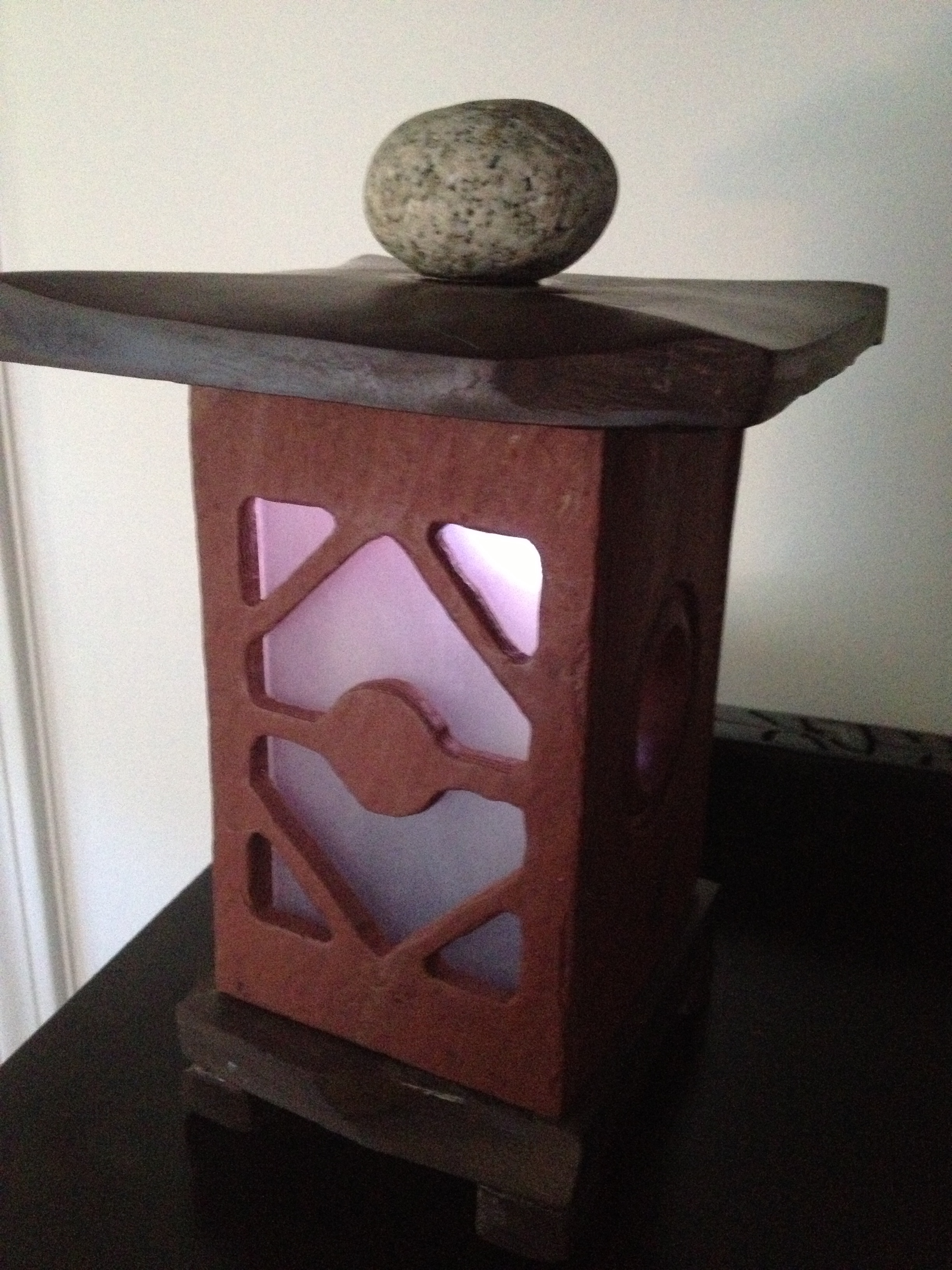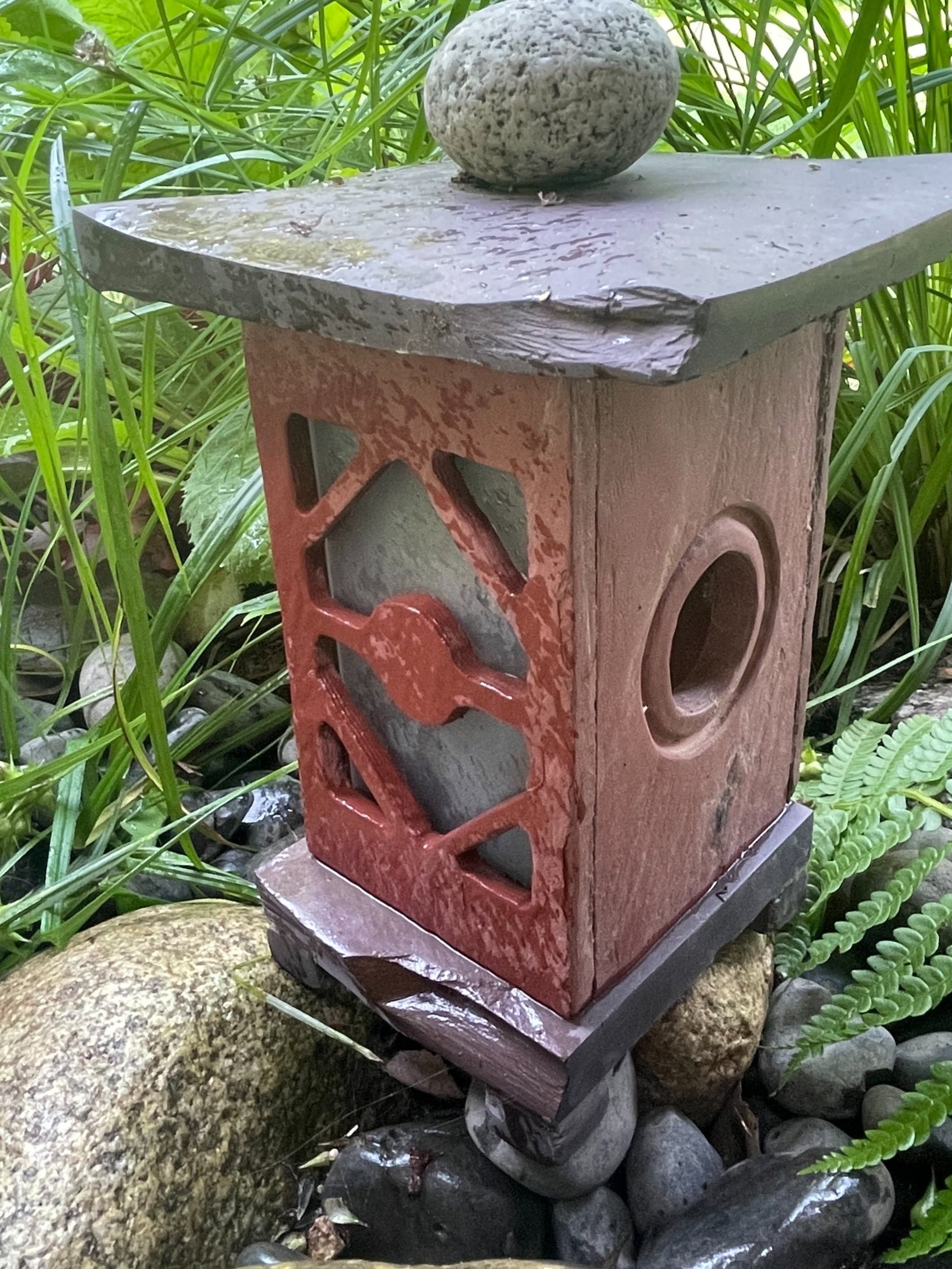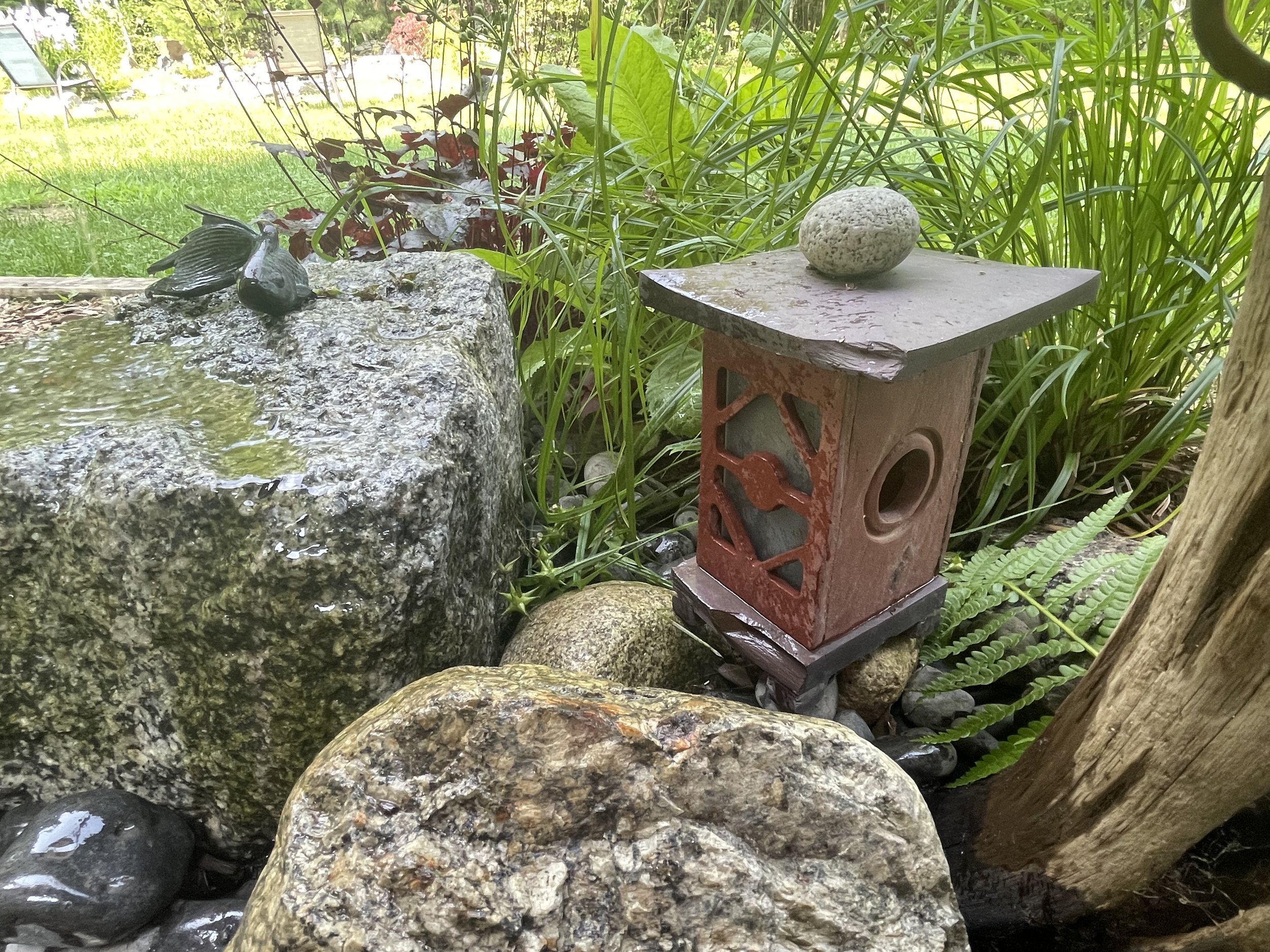Japanese Lantern
When my dad relocated to Maine, we spent a day exploring a gravel pit. Unable to ignore some forgotten pieces of slate, I turned to carving and converted them into a lantern for my dad’s garden.
The lantern consists of three pieces: a base, a four sided body, and roof. A tea candle acts as a light source.
The slate was worked with a tile saw and the cutouts were done freehand with a rotary tool. The roof was polished with fine sandpaper and all surfaces sealed with a 50/50 mix of tung oil and mineral spirits. Initially, a chip corner in the roof discouraged me - the imperfection bothered my inner machinist and I wanted to hide it. But in telling an artist friend about it, he thought it was perfect and he said, “wabi-sabi”. At the time, I had never heard the term.
He taught me that wabi-sabi is the idea of finding beauty in the imperfection in nature, and that it celebrated the aesthetic of things in existence, that are imperfect, impermanent, and incomplete. It completely changed my perspective.


